Ken Stabler
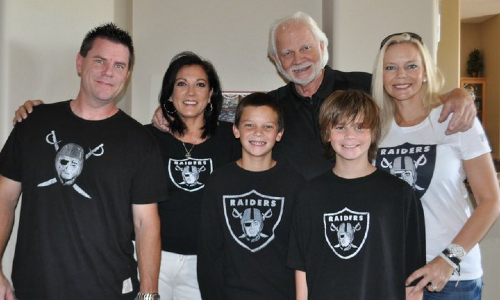
The full NFL story cannot be told without Ken ‘Snake’ Stabler. Some of the greatest moments of the 1970s included this football legend. After his death in July 2015, Ken Stabler was posthumously inducted in the Pro Football Hall of Fame in 2016.

Stabler was a stand out when he played college football for the University of Alabama under the tutelage of legendary Coach Paul “Bear” Bryant. He earned a National Championship ring with the Tide and in his senior year lead his team to a stunning 11-0 record, winning the Sugar Bowl where Stabler was selected as MVP.

Stabler was drafted in the second round of the 1968 NFL Draft by the Oakland Raiders. Stabler first attracted attention in the NFL in a 1972 playoff game against the Pittsburgh Steelers. After entering the game in relief of Daryle Lamonica, he scored the go-ahead touchdown late in the fourth quarter on a 30-yard scramble. The Steelers, however, came back to win on a controversial, deflected pass from Terry Bradshaw to Franco Harris, known in football lore as the Immaculate Reception. He also orchestrated other iconic plays; “Ghost to the Post”, “Sea of Hands” and the “Holy Roller.” Stabler had a remarkable 15-year career in the NFL and spent a decade with Hall of Fame owner Al Davis’ Silver & Black.
During his 10-year career with the Oakland Raiders, Stabler was the 1974 NFL MVP, made the Pro Bowl four times, was the NFL’s leader in touchdown passes twice, and earned a Super Bowl ring with a win over the Minnesota Vikings in Super Bowl XI. He also spent time with the Houston Oilers and New Orleans Saints during his playing days.
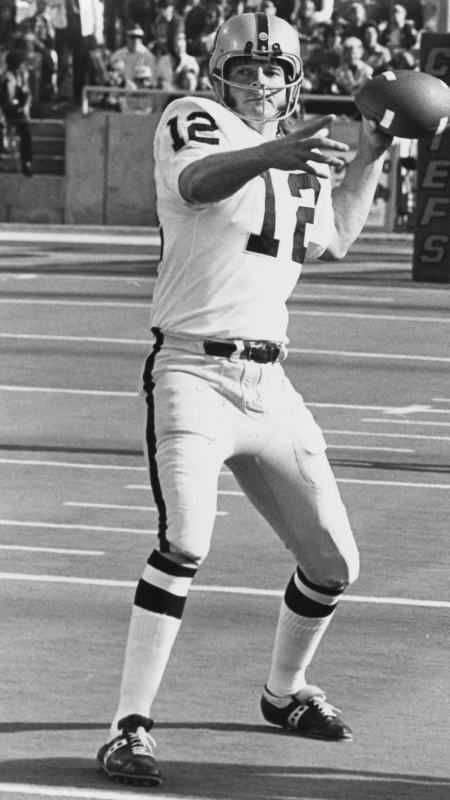
A remarkable career on the field and a remarkable man off the field, Stabler lived life to the fullest. He went on to entertain his legions of fans as a sports analyst for CBS, Turner Sports Network and for the University of Alabama’s Crimson Tide Sports Network. He also was a highly sought after public speaker and spokesman for various national and regional brands and corporations.
But the job Stabler coveted most was definitely that of being a Father. His greatest joy in life came in the gift of three beautiful daughters whom he adored; Kendra, Alexa and Marissa. And in 1998 when Kendra gave birth to twin sons, Jack and Justin, Stabler became Papa Snake and found glory in the best position ever, that of Grandfather.
I was Ken Stabler’s partner the last sixteen and a half years of his life, or as I like to say, I played the fourth quarter with him and we won. Even though my life with Ken had nothing to do with the game of football there were parallels you could not deny; he was a fierce competitor, a leader and a victor in his campaigns to help those in need. Whether it be the $600,000 he raised through his celebrity golf tournaments to build the Ronald McDonald House in Mobile, Alabama or his contributions to Cystic Fibrosis of Alabama, the American Heart Association, the American Cancer Society and many other non-profits, he was there to lead the way and battle the cause presented. Stabler founded the XOXO Stabler Foundation, a 501(c)3, in 2003 to raise funds for various causes. Upon his death we have decided that the battle we must continue to wage a war against is that of traumatic brain injury caused by contact sports.
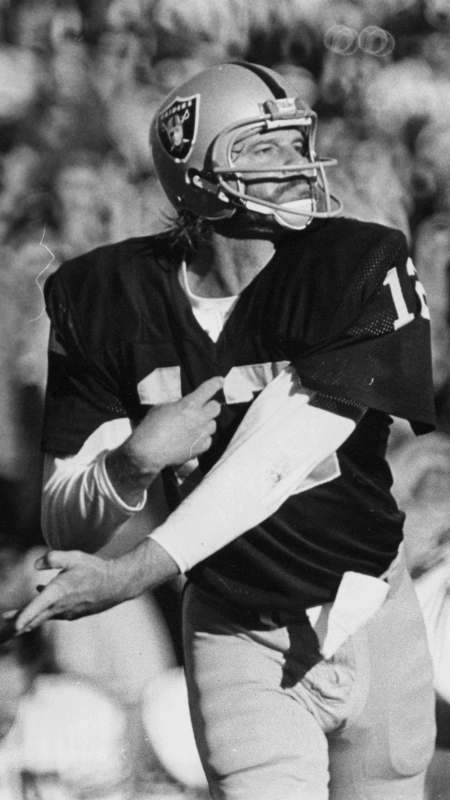
In my opinion, Ken may have eluded the worst of CTE. The beast of colon cancer trumped the impending perils of CTE. After interviewing his daughters and me, Dr. Ann McKee concluded that Ken must have done a “great job compensating for the level of brain damage” he sustained and what is now clearly documented.
His story may be different than most. Ken was of clear and present mind the day he walked into the hospital only to die of complications from the cancer that took his life five months after being discovered. We did see signs of what was to come and undoubtedly the CTE would have progressed to the point of robbing him of his mind.
His daughters, grandsons and I witnessed changes in Ken that were increasingly becoming more obvious. Kendra and I noticed him often repeating himself and he was sometimes confused at stop lights and four way stop signs. He had chronic headaches that went on for days, he described them to be like constant thunderous collisions in his head. The never-ending high pitched sound of tinnitus that simmered all day and night, making it difficult to sleep. He often would look at me and say, “bang, bang, bang” nodding his head all the while trying to explain the noise that just would not go away. He grinded his teeth to the point that he destroyed a bridge in his mouth. When sound and light continued to cause discomfort, he slowly surrendered some of the things he enjoyed the most; his love of music, the volume of sports and CNN. Even the simple day-to-day rituals of me cooking a meal would force him to leave the room and seek shelter in some place of quiet that never quite existed.
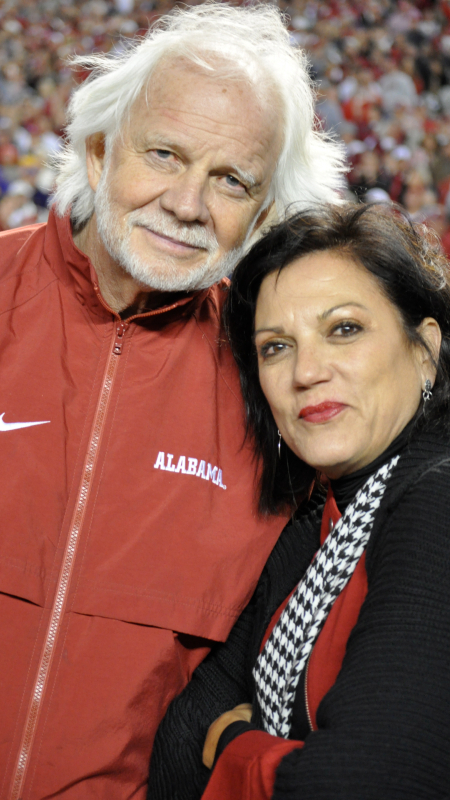
As deeply as we miss him in our lives, I think we would all agree that he had lived a great life, and when the clock finally stopped, maybe he had been as elusive with CTE as he had been on the field where he achieved such greatness. He will forever be missed in the lives of all who loved him and the millions of fans who cheered for him on Sundays. His light shines bright and it always will.
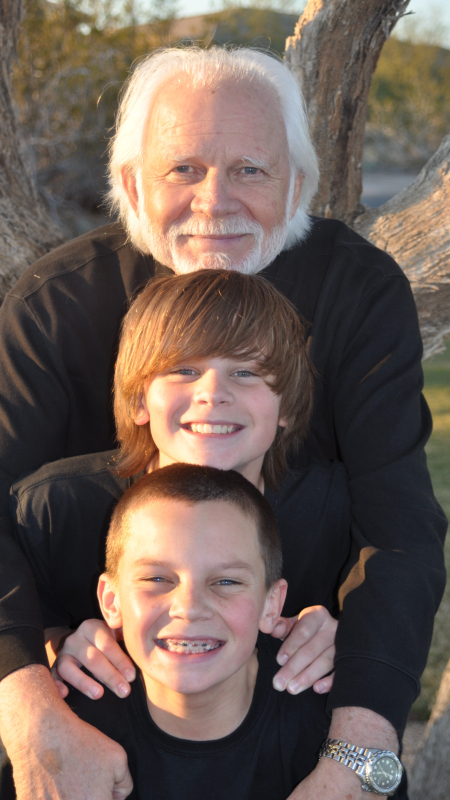
Greg Stanke
Our little West Fargo farmstead became the most unsafe place on earth for our family last summer, but we didn’t expect the nightmare to end with Greg’s death.
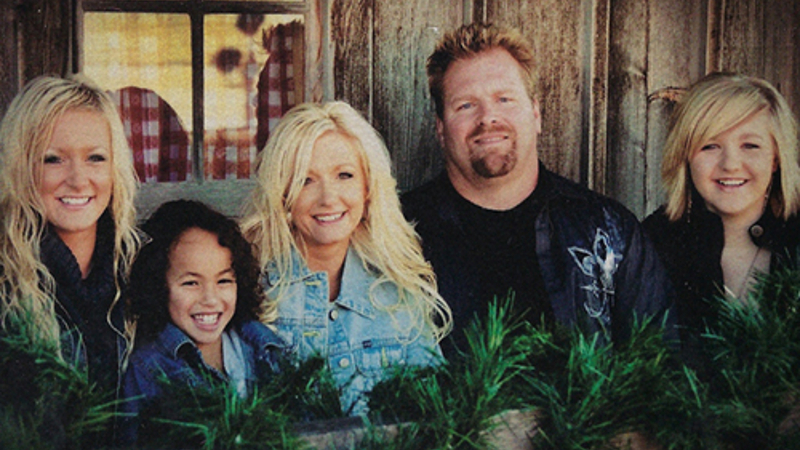
Greg was a linebacker for the North Dakota State Bison and for the Minnesota State University-Moorhead Dragons. He first played tackle football in junior high before starring for his high school team in his hometown of New Prague, Minnesota. After his football career, Greg remained just as competitive, training horses and competing in Cowboy Mounted Shooting in Minnesota and North Dakota all his adult years.
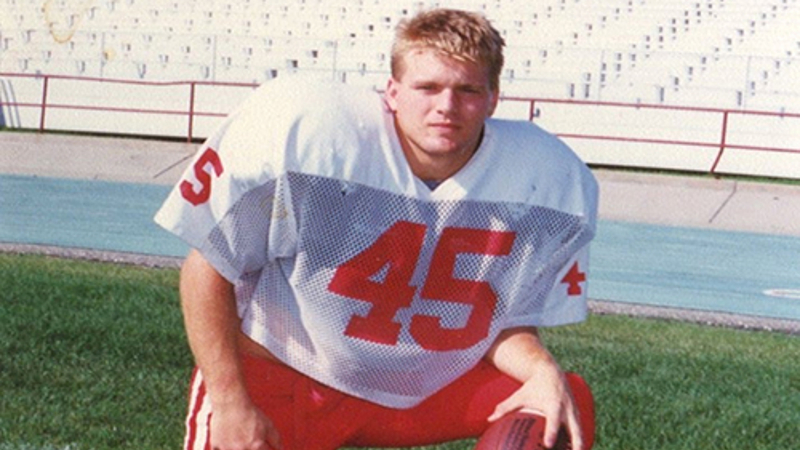
Difficulties and conflicts came slowly and insidiously over the last few years. On May 5, 2018, Greg was knocked unconscious when he came off his horse running at top speed and hit the ground head-first. The months that followed brought turmoil and heartbreak as we, Greg’s family, became entangled in a confusing, bizarre nightmare, ending with Greg’s suicide on September 11, 2018.
Pathology results showed signs of early-stage Chronic Traumatic Encephalopathy (CTE): the stages associated with personality changes, impulse control and depression. Greg’s brain was being assaulted by two levels of damage: at least one recent major head trauma as well as a degenerative disease caused by repetitive head impacts, which for Greg started in his early years.
It was only after Greg’s death that we learned that early-stage CTE causes degeneration in regions of the brain that in similar diseases have been shown to cause psychiatric symptoms like depression and anxiety.
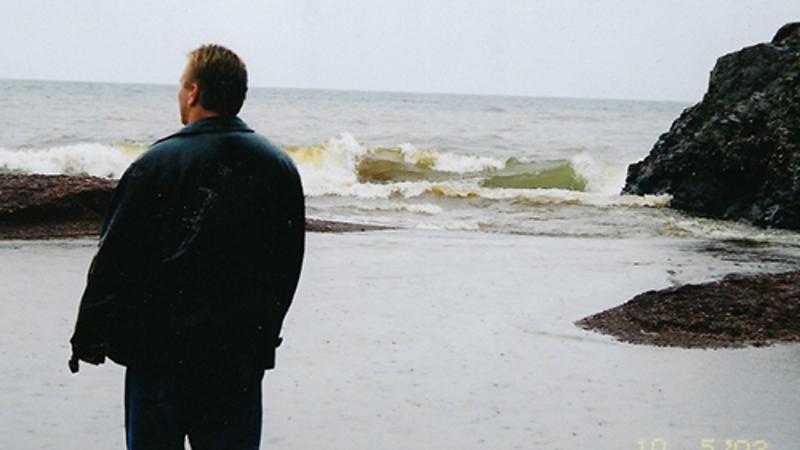
We would be having a very different conversation today if it weren’t for what I learned from the Concussion Legacy Foundation.
Before Greg died, I had no idea a person’s concussion symptoms could be emotional instead of physical. Aside from headaches and fatigue, Greg’s repeated complaint was that he was “just so frustrated.” I thought CTE was only an NFL problem, never once thinking the brain disease could happen to anyone with a history of repetitive head trauma.
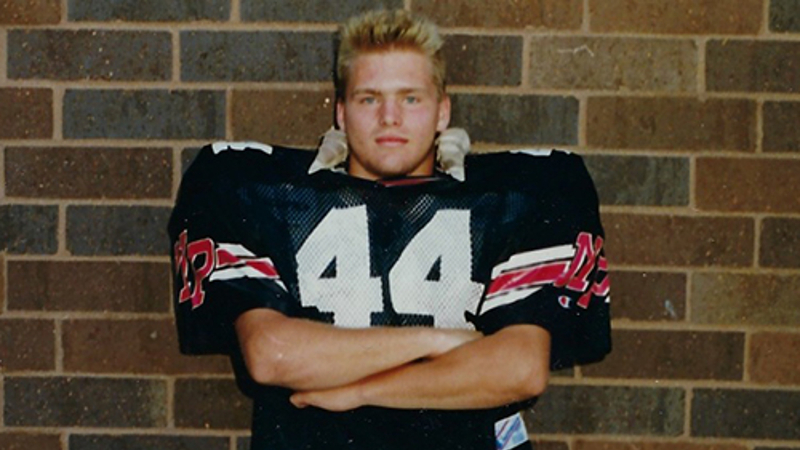
Because of this lack of knowledge, I didn’t request to have Greg’s brain sent to the UNITE Brain Bank in Boston. I had the medical examiner send what small samples of tissue he routinely retained to researchers to search for any signs of damage. Tau protein was found that was consistent with early-stage CTE, but the researchers needed the whole brain to get an official diagnosis.
Knowledge can save lives, but it can also heal the broken hearts of family members who get answers in a diagnosis after losing a loved one.
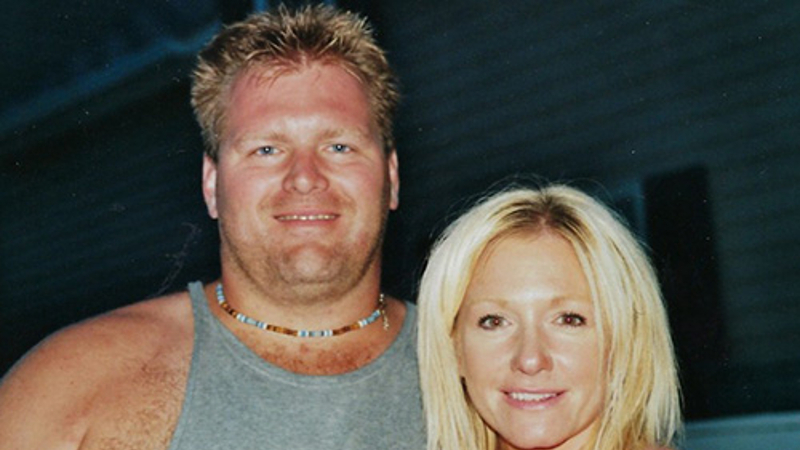
CTE can only be diagnosed after death. Every year, we will hold a fundraising campaign in Greg’s name to support the efforts of Concussion Legacy Foundation because they help fund the research at the VA-BU-CLF Brain Bank. Researchers there are working tirelessly to find a way to diagnose CTE in the living and ultimately cure it.
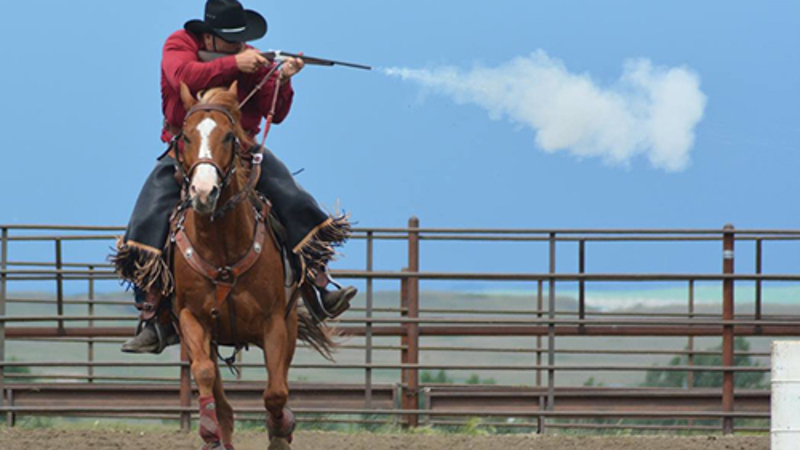
Click here to donate to support CTE research in honor of Greg Stanke’s Legacy.
If you are struggling to cope and would like some emotional support, call the Suicide & Crisis Lifeline at 988 to connect with a trained counselor. It’s free, confidential, and available to everyone in the United States. You do not have to be suicidal to call.
Chauncey “Chad” Steele

Chad had an outstanding athletic career. He began playing football at ten years old at Dexter School, a boys private day school in Brookline, Massachusetts. He was selected to the State Boys soccer team and played varsity hockey and football at Noble and Greenough School. He then went on to become a three-year starting varsity defensive back at Columbia University. After college, Chad took up tennis and participated in the U.S. Father and Son Championship at the Longwood Cricket Club with his father. Later in life, he became an avid golfer.
Chad was one of the brightest people I have ever known. Chad was a precocious reader with an exceptional curiosity about everything from the evolution of all living creatures, the geographic wonders of the earth, the significance of studying ancient cultures and architecture, and even the evolution of ethics and moral behavior.
When he was ten years old, we visited the Museum of Fine Arts in Boston to see the Pompeii exhibit. He described the experience as the moment when he knew he wanted to study the history of Roman and Greek civilizations. He would continue this passion and go on to major in the Classics at Columbia University.
He would often tell the story about how he chose this study. He called me one evening and said he needed to declare his major and I asked him what really interested him. He said, “Latin and Greek.” I said go for it and he said, “Well, it will not get me anything except maybe being a pharmacist with Latin words for prescriptions.” We laughed when, in the fall playing varsity football at Columbia, the coach said they did not know how to help him through the semester since no one had ever played football and majored in the Classics.
His passion for ancient civilization led him to travel extensively in and around Italy and Greece, visiting remote sites, particularly lesser-known ruins in Sicily and out of the way Greek islands. His scope of knowledge was extraordinary. He could converse for hours on subjects from the Roman poet Catullus to Grecian urns. His enthusiasm for Greek and Roman architecture and sculpture was contagious. I will treasure his intellect and his enthusiasm for sharing his repository of knowledge.
I will forever remember how wonderful he was to his two younger brothers, Adam and Gavin. They recall at ages 10 and nine travelling with Chad to New York to visit me in the hospital. They remember visiting his fraternity at Columbia, thinking how cool it was that there were so many video games in his room. They remember him taking me out of the hospital and taking us all to dinner.

I will cherish his letters from summer camp in the Adirondacks. I will cherish our pack trip to the Tetons, sleeping in the wilderness and fishing on the Snake River. I will never forget his face when I drove him to his first away game at Thayer Academy as a freshman at Noble and Greenough School. The boys on the Thayer team were all powerfully built, and he looked at me and said, “Those guys are really big. How am I going to handle this?” Then, just like that, he looked me in the eye, winked and got out of the car.
When, where and how did he devolve into an addict and alcoholic and lose his job, his home, and his relationship with his siblings due to his raging and violent behavior?
Did his CTE begin when he was 15 or 18 or did it begin when he was younger? What was the tipping point? When did his sometimes-arrogant intellect morph into narcissistic sociopathic behavior?
When did his aggressive behavior frighten us to the point where my other sons did not want me to see him alone? He blamed his addiction on my father who was an alcoholic. He blamed it on the opioids he was prescribed after a football injury at Columbia.
Did he know something was wrong? Was there anything we could have done? Were there warning signs? After enabling him for years, my family suggested I not see him. He continued down the path of his addiction, which became primarily alcohol.
He befriended an elderly woman named Ruby in his neighborhood who used to drag him off the curb after one of his routine binges. She became his substitute mother and tried to get him help to no avail. What were the demons in his brain?
Sadly, by the time he wanted to try to stop drinking and work his way back to recovery, his liver was failing. He bought a fancy juicer and would call me and ask how to make healthy smoothies. He tried to cook and eat healthy, again calling me to talk him through recipes.
We spent last summer trying to get him on a liver transplant list, but his body was not able to recover. He was in and out of the hospital until he was too weak to be on his own. When the liver fails, everything breaks down and he had to suffer through painful belly drainage every few days as his liver was not able to remove toxic waste.
To the end, he never discussed dying but three days before he passed, as I sat next to his bed, he reached over and brought my head into his chest and hugged me. He said, “I love you.”
He died on a summer afternoon at Massachusetts General Hospital two hours after I kissed him goodbye. I am not sure what made me decide to donate my son’s brain to Boston University’s CTE Center, where researchers diagnosed him with stage 1 CTE. It seemed this would be a way for his life to go on having meaning. But maybe it was also that I wanted to know what happened to bring him to this tragic end. Somehow, I wanted his life and incredible mind to have been for something greater than his death.

William Straub
Daniel Strawbridge
Walt Strobach
Walter Strobach was born in Jamaica, N.Y. on March 8, 1939, the son of Walter and Catherine (Keenan) Strobach. He grew up in the St. Albans neighborhood of Queens, where he acquired the New York accent he kept his entire life, despite leaving his hometown at 18 to attend the United States Naval Academy.
Before leaving Queens for the Navy, Walt was a three-sport athlete at Brooklyn Technical High School. He excelled particularly in football as a running back known for his grit, determination, and refusal to back down on the field, traits which served him well his entire life. During his senior year, Walt led his team to an undefeated season, winning the Public School Athletic League City Championship in 1955. During this remarkable season, he was the league’s highest scorer, with 127 points from touchdowns and extra points.
Walt’s gridiron exploits earned him a coveted spot on a Navy football team that was a perennial top-10 squad. His senior year, they finished ranked No. 4 in the country, including an appearance in the Orange Bowl. During his college years, he was also a starter on the Navy baseball team. He maintained ties with both teams via alumni events throughout his life.
Walt’s time at the Naval Academy forever left a mark and made him who he was thereafter. He constantly reminisced about his days at the Academy; his love for his alma mater was undeniable. A big part of this love was the fact he had the most important introduction of his life there. It was at a Naval Academy mixer he met his wife of over 60 years, Cookie Shea, herself the daughter of a Naval Academy grad (John D. Shea ’32). She was 17 and he was 19 when they first met. Cookie was in very high demand as a dance partner that night, and as was the custom of the day, he politely cut in with her by offering a memorable line which she never forgot: “Would you like to step off the merry-go-round to dance with me instead?” Together, they had six children and a lifetime of memories.
Those shared memories began Sept. 1, 1962, when the young ensign, fresh from his successful interview with Adm. Hyman Rickover, took a break from his Navy nuclear-powered submarine training to marry Cookie. They settled in Groton, Conn., where they immediately started a family.
Walt’s love for his children was one of his best traits. His playfulness, patience, and genuine affection for his young children and later his grandchildren provided lasting fond memories. Whether it was playing in the waves at the beach, throwing a football in the yard, or wrestling in the family room, Walt clearly found much joy acting like a kid himself as he played with his children.
Walt’s Navy career took him, Cookie, and their brood to many places after Groton: Charleston, S.C., Honolulu, Hawaii, and Pascagoula, Miss. before settling into Virginia Beach, Va. Along the way, Walt served aboard various nuclear submarines, including the USS Aspro, USS Ethan Allen, USS Simon Bolivar, and USS Henry Stimson.
Walt retired from the military in 1981 but never quite walked away from it. Watching his son and three of his grandsons follow him into the Navy gave him much pride and satisfaction and provided endless subject matter as he peppered them with questions.
He worked in real estate and finance after his Navy years, as well as stints teaching business courses and instruction in the emerging computer technology sector. Eventually, Walt and Cookie departed Virginia Beach and made their way to Mechanicsville, Va. to be closer to family. Departing Virginia Beach was bittersweet for them, having lived there for over 30 years. They left behind a lifetime of friendships and ties to the area but did their very best to maintain them.
Walt spent his final days enjoying retirement at home with Cookie, characterized by frequent visits from their adult children and grandchildren, a daily cigar on the back porch, and an occasional hearty meal of nachos and light beer at the local sports bar.
Most importantly to Walt, he spent the majority of his last years focused on his deep Catholic faith. In addition to attending Mass daily, he was extensively involved with the Richmond Diocese Prison Ministry, served on the Parish Council as a Religious Education Instructor, and participated in the Knights of Columbus. He was blessed to receive final sacraments and apostolic pardon while at home in hospice. During this graceful transition, all 17 of his grandkids either called him on his final days or were present to tell him they loved him and were praying for him. He heard everything they said.
Walt passed away peacefully on June 7, 2023, at the age of 84. He was surrounded by his wife of over 60 years and his five adult children. After his passing, his brain was donated to the UNITE Brain Bank, where researchers later diagnosed him with stage 3 (of 4) CTE.
Walt is survived by his wife of over 60 years, Sharon “Cookie” Strobach; their children, Walter F. “Rick” Strobach, Jr., Sharon “Sweetie” Hoioos, Susan Fisher, Stasia Strobach, and Cmdr. Michael Strobach, USNR; as well as 17 grandchildren. He was predeceased by his son Michael “Michael the First” Strobach.
Charlie Thayer
Owen Thomas
This is dedicated to Owen Daniel Brearley Thomas. Owen’s name has become world-famous because of his struggle with CTE, a degenerative brain disease that is the result of head trauma, which resulted in his taking his life. To most, he is one of the youngest people to be diagnosed with CTE; but for the 21 years prior to his death, Owen Thomas was so much more than a name associated with CTE. This is a piece of his story.

On April 26th, 2010, a shockwave ripped through the social fabric of Parkland School District: one of our greatest sons, Owen Thomas, killed himself. The shocking news spread like wildfire across text-message lines, Facebook inboxes, and phone calls, and within an hour, hearts all across the United States were devastated over the loss of a brother, a friend, a student, a son. He was 21 years old.
Owen Thomas was more than your average man, far more. He was an A-type personality, a vibrant smile, and a bull of a body with a thick neck and flowing orange hair. To the girls who passed him in the high-school hallway or had class with him, Owen was a gentle giant, a gentleman. He was also the brightest mind in all of his classes, humbly keeping a GPA above 4.0; his friends only knew if they asked. To his opponents on the football field, Owen was a mythological creature. The fiery tips of his sweat-glossed hair, which flared out of the bottom of his helmet, were his calling card; running backs did not run towards that hair, nor did quarterbacks throw. To his coaches and teachers, he was one in a million, an inspiration to those whose job it was to inspire. Owen’s teammates, who unanimously voted for him as captain, thought of him as a fearless leader, similar to the way Scotsmen felt about the brave William Wallace as he proudly galloped out in front of the modest Scottish army. No matter what their odds were in the fight, Owen’s teammates were ready and willing, confident of victory with O.T. leading the charge. Those who were closest to Owen knew that he was all of these things and more.
There was, however, a heavy price that Owen paid to be such a fierce and dynamic person. He was a dedicated student who would often lock himself in his room, working for hours with the Beatles playing in the background until every assignment was completed flawlessly and to the satisfaction of his teachers. His work ethic when it came to academics was baffling to his friends. Even greater was his dedication to competitive athletics – especially football.

Whether it was running sprints, powerlifting, or practicing on the field, Owen’s tenacity was unmatched. He seemed to enjoy the pain and struggle that everyone else dreaded. Owen never complained, and he was never hurt. In fact, he challenged his own teammates to question whether they were truly injured, or just “banged up a bit.” It was a coach’s dream to have Owen around because he would raise the entire team’s effort simply with his stoic presence on the field.
Owen Thomas was the embodiment of old-school American football – hard-hitting, nose-for-the-ball, hit ‘em in the numbers football. On Fall Friday nights under the lights of Orefield Stadium, when the tests and papers had all been turned in and a hard week of practice had ended, Owen shined. Thousands of fans watched in awe as #31 went to work, pouncing on the ball-carrier like a hungry lion. After high school Owen moved on to the University of Pennsylvania where he was admitted into the illustrious Wharton School of Business; he continued to be a dominating force on football field for the Penn Quakers. It was not surprising for his friends and family back home to learn that he was quickly endeared by everyone he met at Penn, where he was voted team captain and helped lead the team to an Ivy League Championship.
He played the brand of football that people wanted to see – the brand of football that made it America’s favorite pastime. Owen’s style was similar to Chuck Bednarick, Jack Lambert, and Dick Butkus: he was not blazing fast, but he would always find his way to the ball, and when he got there, he was mean. All the good that came from Owen’s abilities, the 17 straight wins at Parkland High School, the Ivy League Champion ring, the trophies, the entertained fans, the community pride, it all came with a price – a sacrifice.
Owen was a pitbull without a leash on the field, and it was silently killing him. CTE, or chronic traumatic encephalopathy, developed in his brain as a result of head trauma from football. Scientists believe this disease causes symptoms of depression and affects rational decision-making. In 2010, in his apartment, Owen took his life. He is the youngest and one of the first football players to be diagnosed with CTE. Since that day, awareness of the disease has skyrocketed. Campaigns to make athletics safer have resulted in rule changes from youth sports all the way to the NFL, and new equipment has been designed to prevent head trauma.

In six short years since his death, the whole persona of football has changed. The helmet-to-helmet hit is no longer glorified, and that is a good thing. Concussions are treated as life-threatening injuries, because they are. CTE is being studied and cures are being researched. In general, our society is having a revolution in sports safety that is keeping the passion of the game intact while caring for the health of athletes.
We should revere and respect the way Owen and others like him played their sports with passion and unmatched tenacity. We should also learn from their stories. We should join the fight to make sure that athletics do not die out, but grow stronger and better – safer. It is for this reason that Owen’s friends have decided to join the Concussion Legacy Foundation’s My Legacy campaign. Every dollar donated to this campaign goes towards research and education of sports safety, helping to ensure a safe future for generations of athletes.